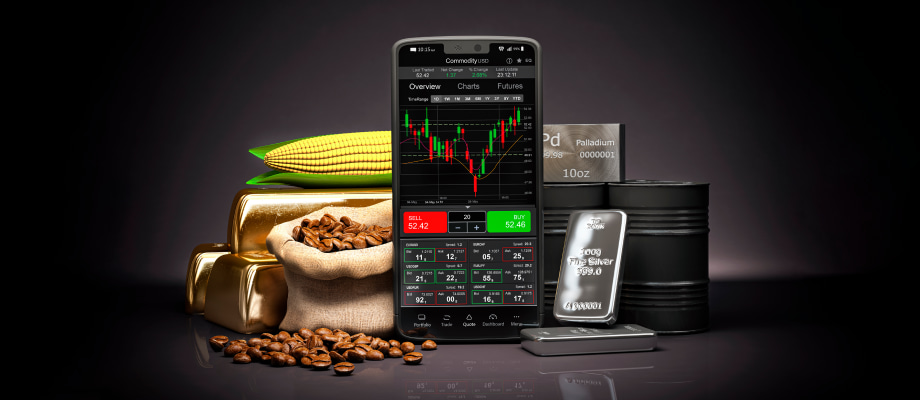Spot prices and futures prices play a critical role in the world of commodity trading. As a trader or investor in this market, understanding the relationship between the two prices will enable you to navigate the commodity trading landscape more effectively.
This is where we come in to clarify the difference between commodity spot prices and futures prices, explaining the factors that influence their changes. By providing straightforward explanations, we hope this guide will empower you and other individuals interested in commodities to make informed decisions.
What is a Spot Price?
Before we dive into the spot market vs futures market prices, let’s start by understanding the spot price definition. Spot price in commodity trading is the current market value of a commodity for immediate purchase or delivery. It represents the price at which a commodity can be bought or sold in real-time without any contractual obligations or future commitments.
Spot commodity prices are determined by the forces of supply and demand at a specific moment in time. They can fluctuate based on various factors such as market conditions, geopolitical events, weather conditions, and changes in consumer demand. As such, spot prices provide a snapshot of the commodity’s current worth in the open market.
Spot prices are particularly relevant for traders and investors who engage in short-term transactions. They offer immediate pricing information and allow for quick decision-making based on real-time market conditions. Commodities with spot prices include precious metals such as gold and silver, agricultural products like wheat and soybeans, energy resources like oil and natural gas, and many others.
What is the Difference Between Spot Prices and Futures Prices?

As mentioned earlier, understanding the spot market vs futures market prices is paramount for anyone involved in commodity trading. These two pricing concepts hold significant implications if you seek to effectively navigate the financial market. Below, we unravel the differences between spot prices and futures prices, shedding light on their unique characteristics and the factors that shape their variations.
Commodity Spot Prices
Commodity spot prices represent the current market value of a commodity for immediate purchase or delivery. They reflect the price at which a commodity can be bought or sold without any future obligations or contracts. Spot commodity trading prices are influenced by factors, including supply and demand dynamics, market conditions, geopolitical events, and more. They provide a snapshot of the commodity’s current worth and are crucial for short-term transactions.
Commodity Futures Prices
When considering futures and options trading, it’s imperative to understand that these markets are inherently highly leveraged and speculative. To navigate them successfully and mitigate risks, it’s crucial to familiarise yourself with the intricate contract terms and the potential for margin calls that could affect your positions.
These financial instruments demand a deep understanding of derivatives trading, and therefore, it’s advisable to engage in futures and options only if you possess the requisite knowledge and expertise. Prudent and informed participation in these markets is essential to safeguard your investments and capitalise on their potential benefits.
Regarding commodity future prices, it refers to the expected cost of a commodity for future delivery at a predetermined date. Futures prices are determined through futures contracts, which are agreements between buyers and sellers to buy or sell a commodity at a specified price and delivery date in the future. These contracts enable traders and investors to speculate on the future price movements of commodities and hedge against potential risks.
Overall, the main difference between spot prices and futures prices is timing and contractual obligations. Spot prices focus on immediate transactions, providing real-time market values for on-the-spot buying or selling. In contrast, futures prices revolve around future transactions, where buyers and sellers commit to fulfilling the terms of the futures contract at a specified date in the future. Futures prices consider not only current supply and demand factors but also market expectations and other variables that may impact the commodity’s value over time.
Spot Price & Futures Price Example
To illustrate the difference between spot prices and futures prices, let’s consider an example involving a hypothetical commodity: wheat.
The spot price of wheat represents its current market value for immediate purchase or delivery. Suppose the spot price of wheat is $5 per bushel. This means that if you buy or sell wheat on the spot market today, the prevailing price would be $5 per bushel.
On the other hand, let’s explore futures prices. Assume there is a futures contract for wheat that expires in three months. The futures price for this contract is $5.50 per bushel. This means that buyers and sellers in the futures market have agreed to purchase or sell wheat at $5.50 per bushel at the contract’s expiration, regardless of whether the spot price is higher or lower.
Now, consider a scenario where the spot price of wheat increases to $6 per bushel by the expiration of the futures contract. In this case, buyers of the futures contract at $5.50 per bushel would benefit because they can buy wheat at a lower price than the prevailing spot price. On the other hand, sellers of the futures contract may incur a loss because they are obligated to sell wheat at a lower price than the spot market price.
Conversely, if the spot price of wheat declines to $4 per bushel by the expiration of the futures contract, buyers of the futures contract at $5.50 per bushel would face a loss since they have agreed to buy wheat at a higher price than the spot market value. On the other hand, sellers of the futures contract would benefit because they can sell wheat at a higher price than the prevailing spot price.
This example demonstrates how futures prices allow market participants to hedge against price fluctuations and manage risk. It also highlights the distinction between spot prices, which reflect immediate market values, and futures prices, which involve contractual agreements for future delivery at predetermined prices.
Basis Definition
The basis is a crucial concept in the commodity market that helps traders and investors understand the relationship between commodity spot prices and futures prices. It provides insights into market dynamics, supply and demand forces, and the convergence or divergence between cash and futures markets.
The basis is calculated by subtracting the futures price from the spot price of a commodity. It represents the numerical difference between the two prices and is denoted as a positive or negative value.
A positive basis indicates a market condition where the commodity’s immediate availability is scarce or in high demand, leading to higher spot prices compared to futures prices. In this scenario, traders are willing to pay a premium for immediate access to the commodity rather than waiting for future delivery. This can occur during times of supply shortages, sudden changes in demand, or localised disruptions.
Conversely, a negative basis signals a market situation where there is an abundance of the commodity or weak immediate demand, resulting in lower spot prices relative to futures prices. It suggests that traders are willing to sell the commodity at a discount in the cash market to encourage its consumption or storage. A negative basis can arise during periods of oversupply, seasonal harvests, or when there are concerns about future market conditions.
The basis reflects the market’s perception of various factors influencing the pricing of the commodity. These factors may include storage costs, transportation expenses, seasonal variations, quality differentials, interest rates, and market expectations.
FAQs
Futures prices are higher due to carrying costs and expectations of future supply and demand dynamics, reflecting the cost of holding the commodity over time. In most cases, futures prices tend to be higher than spot prices when a commodity has an increased supply.
Futures prices can be lower during backwardation, caused by limited supply and high demand or when storage costs exceed price differences.
Spot commodity prices influence futures prices as they reflect current market conditions, supply and demand factors, and expectations.
Yes. The spot price represents the current market price at which traders/investors can buy or sell a commodity for immediate delivery. It is one component of the overall market price.
Conclusion
Commodity spot prices and futures prices serve different purposes in the commodity trading landscape. Before deciding whether to trade on the spot or futures markets, you must understand the spot price and futures price formula plus the risks that come with exploring each market. Additionally, identify the best commodity trading platform with features suitable for your trading needs to guarantee an exciting experience. When placing your trades, always apply risk management controls. This is because the commodity market is volatile, and you do not want to risk losing a lot of money in case a trade doesn’t work in your favour.




In the ever-evolving world of trading, as AI-powered crypto trading apps surge in popularity in the UK, could these innovations eventually replace human traders, or will there always be a need for human intuition and expertise in the market?
AI-powered crypto trading apps are transforming the UK market with speed, automation, and data-driven accuracy. But they won’t replace human traders entirely. Markets still depend on human judgment, especially during unexpected events or when interpreting complex sentiment. The future is not AI versus humans—it’s AI supporting informed human decision-making.
As AI-powered trading platforms become increasingly popular in the UK, are they revolutionizing the trading landscape, or are they posing a threat to human traders by making their skills less relevant? Considering the best AI trading apps in the UK and their implications, what's the future of human-versus-AI trading in the UK market?
AI trading platforms are reshaping the UK market with faster analysis and automation, but they’re not replacing human traders. While AI excels at data and execution, humans are still needed for judgment, context, and interpreting unexpected events. The future is a hybrid model — AI handling the heavy data work, and humans providing oversight and strategy.